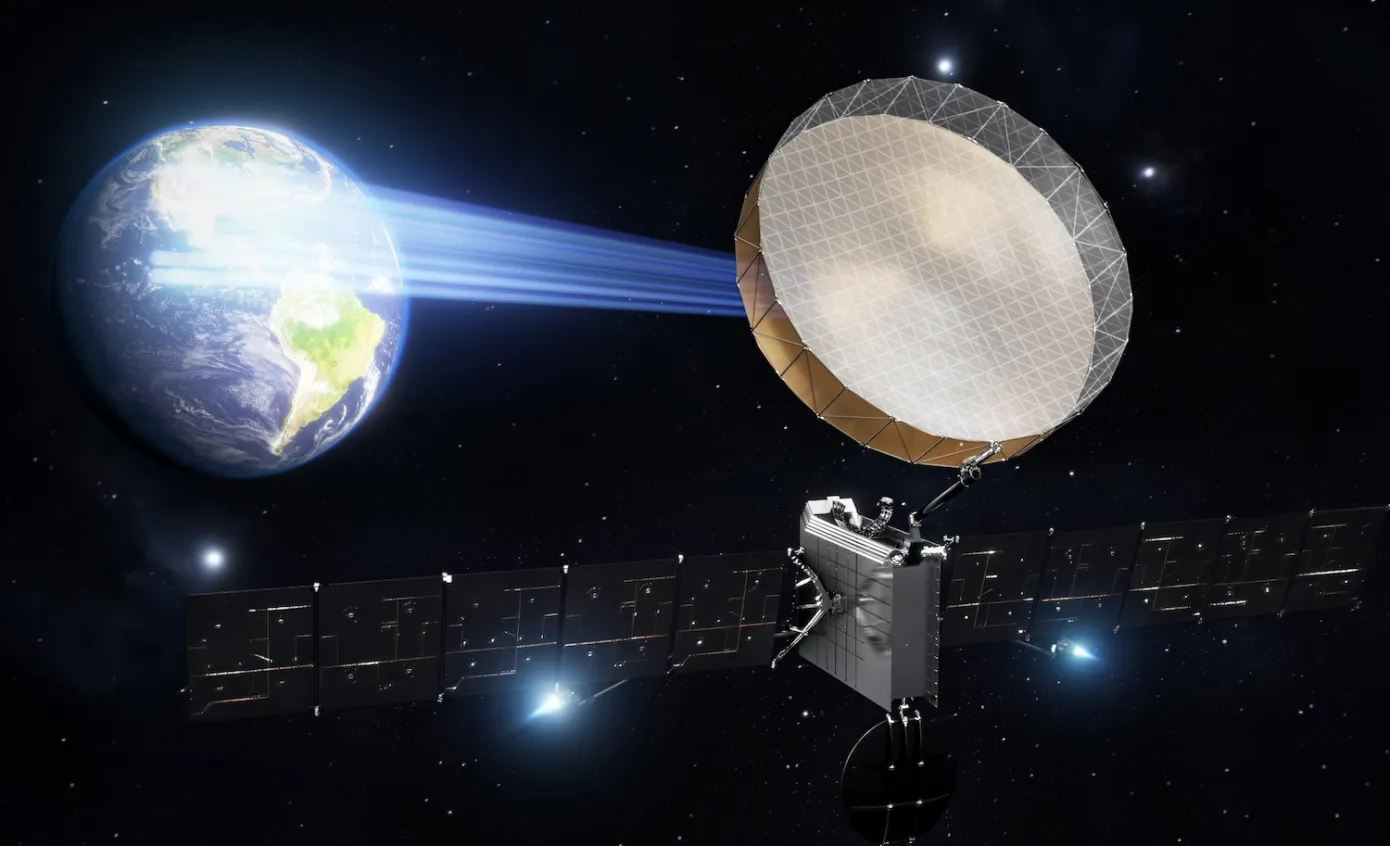Astranis reveals Omega “MicroGEO” satellites designed to deliver dedicated broadband from high orbit

Astranis has unveiled its latest innovation in the realm of communications satellites with the introduction of Omega, a new generation of satellites designed to deliver broadband services to customers on Earth from geostationary orbit. These satellites are set to be faster and smaller than any existing communications satellites, marking a significant advancement in orbital communications technology.
Omega satellites are poised to provide approximately 50 gigabits per second of bandwidth in both civilian and military Ka bands, demonstrating their versatility for a wide range of applications. Notably, Astranis emphasizes that Omega satellites are intended to serve both commercial and government clients, underscoring their dual-use capability.
Astranis, known for its development of relatively compact broadband satellites in high orbits, positions itself as a provider of satellite capacity to telecom and internet service providers worldwide. The company has already secured contracts to supply capacity to providers in various regions, including Mexico, the Philippines, Alaska, and southeast Asia.

One key aspect of Omega satellites is their smaller size compared to traditional GEO satellites, which are typically larger and more susceptible to tracking and potential attacks. Astranis CEO John Gedmark emphasized the need for a more resilient architecture, aiming to avoid large, vulnerable satellite targets.
The enhanced bandwidth of Omega satellites is attributed to a next-generation software-defined radio developed by Astranis. Moreover, the signal is deployed more efficiently, with the new generation employing a technology akin to a large LED array, ensuring a more uniform signal coverage across a broader area. This advancement enables the potential to serve millions of points, depending on the customer and specific use case. Additionally, Omega satellites utilize existing Ka-band receivers rather than requiring bespoke antennas, further simplifying their deployment and integration into existing infrastructure.













